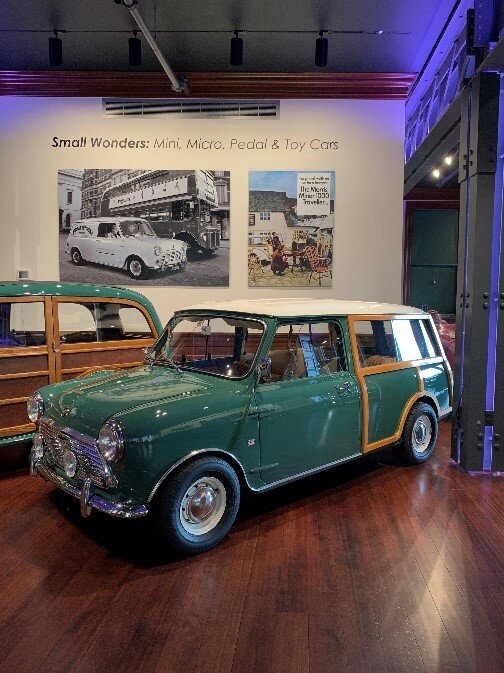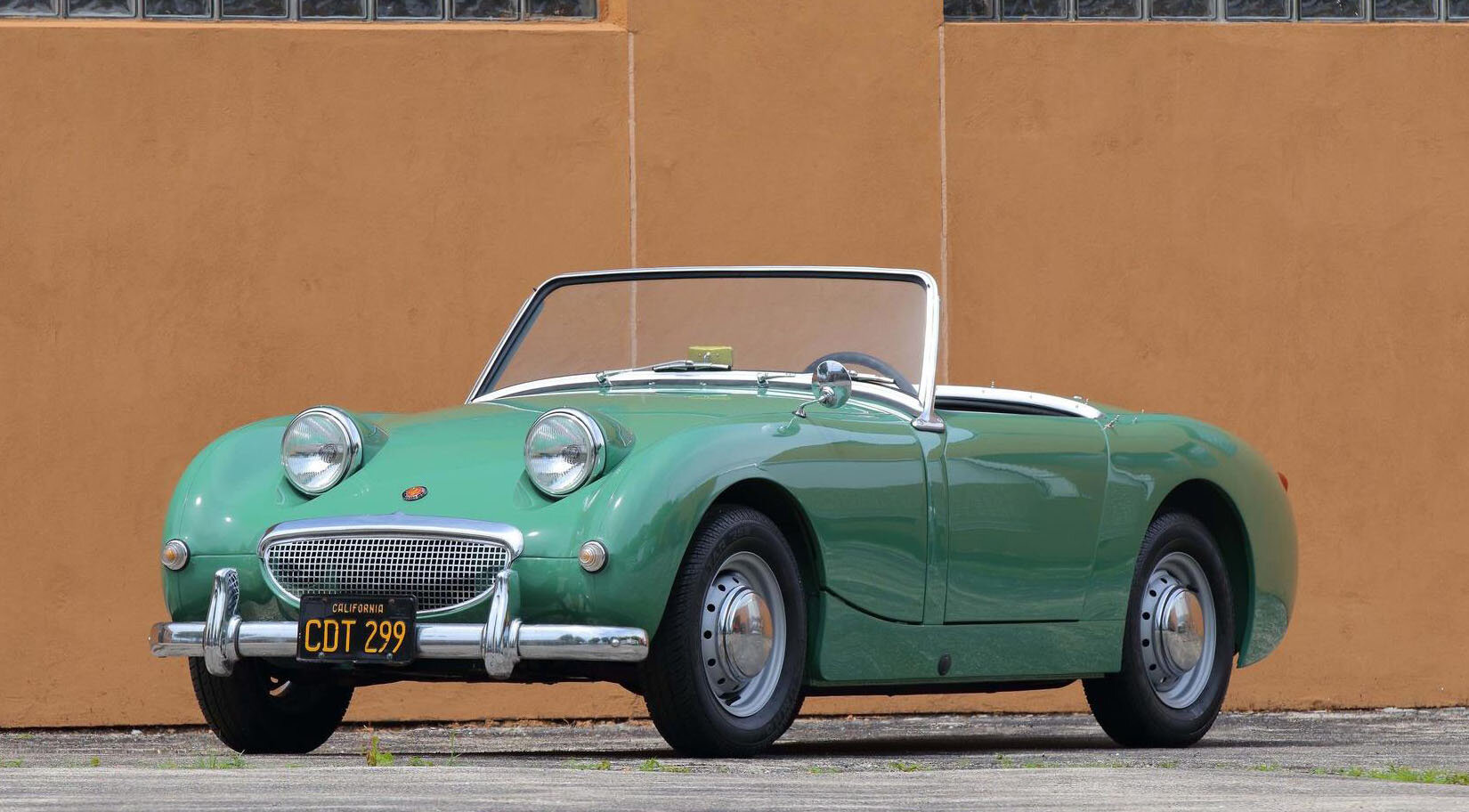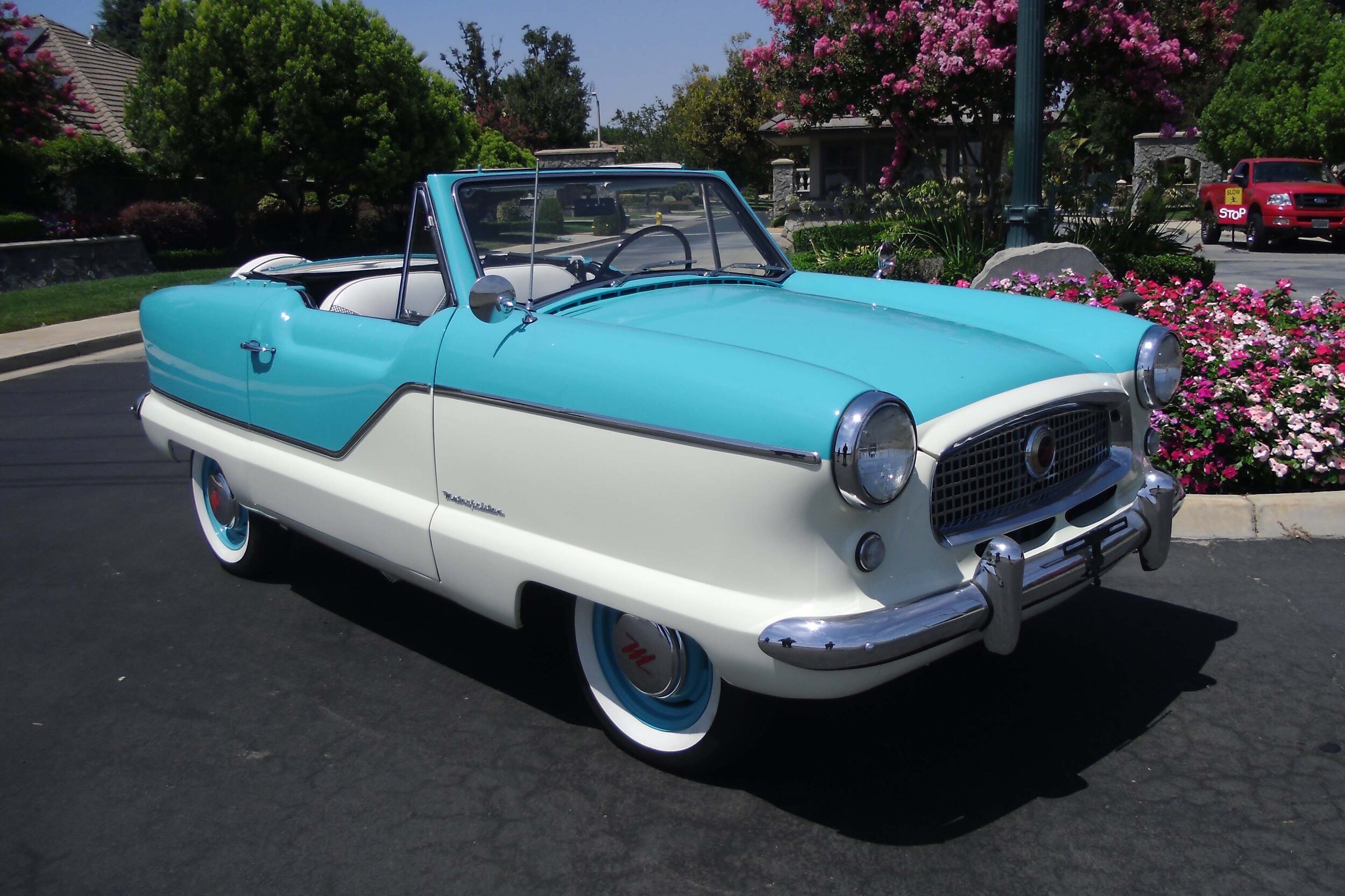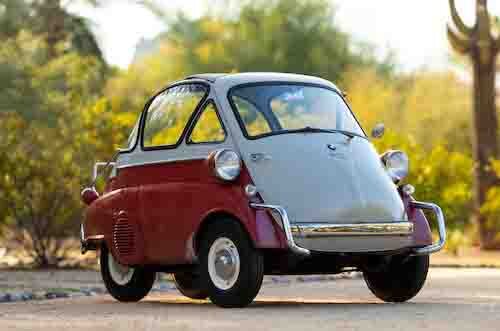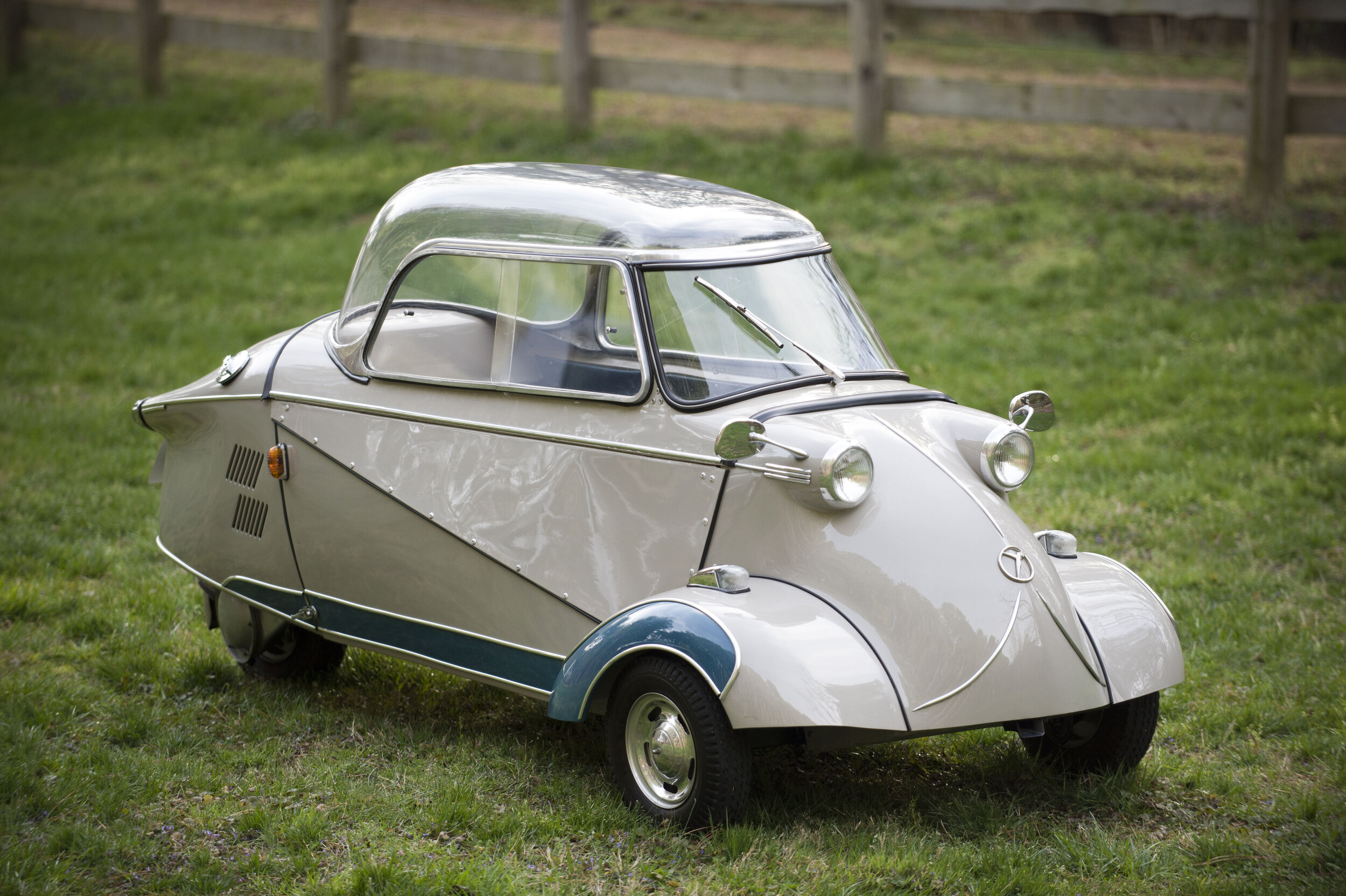Gas & Electric Kid’s Cars
Porsche 936 Go Cart

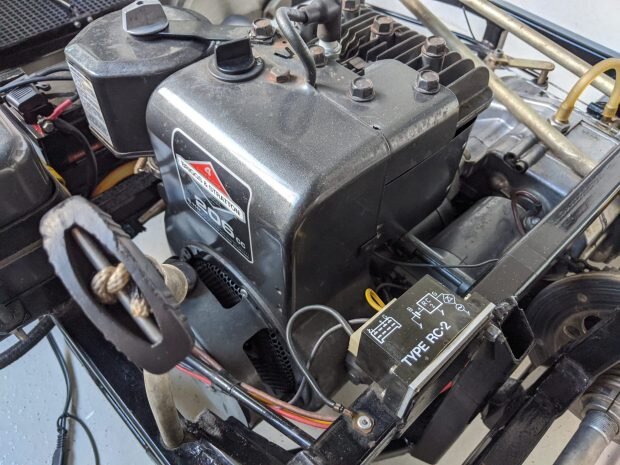
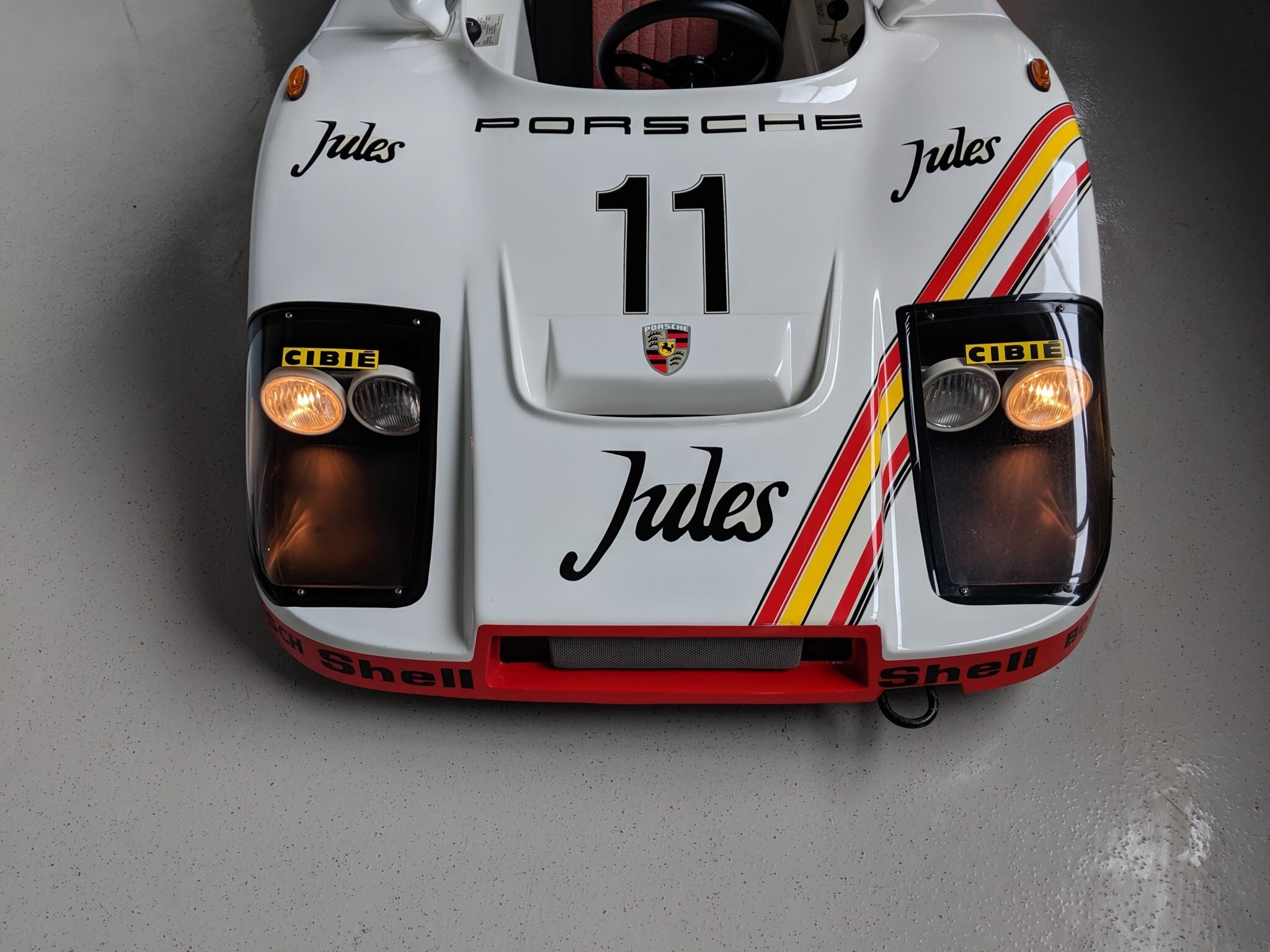
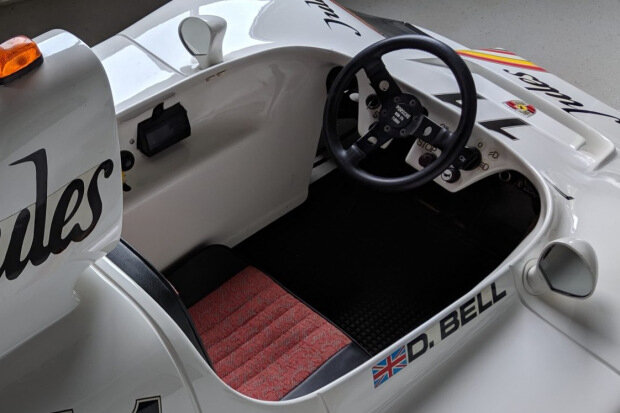
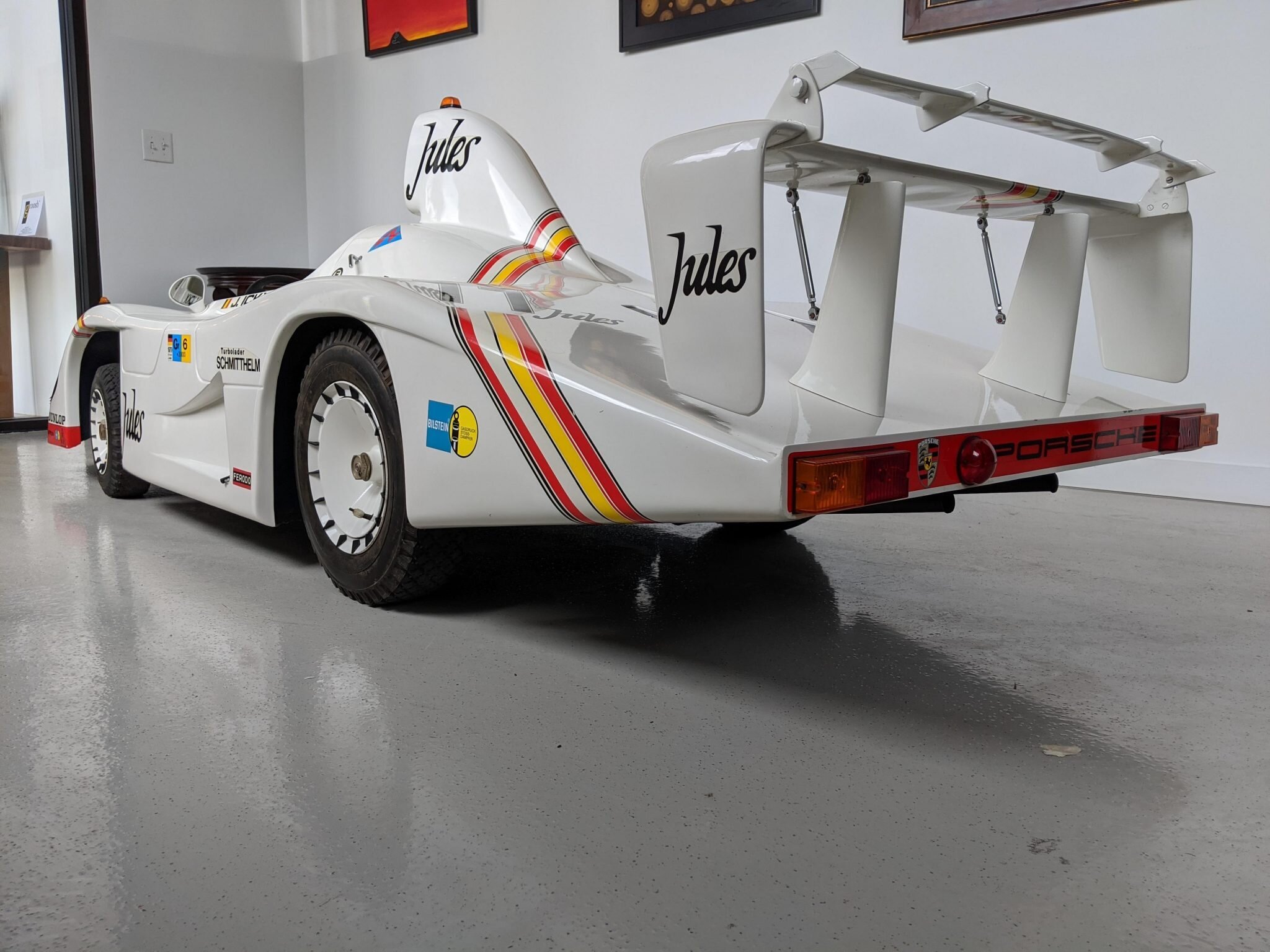
In 1981, Jackie Ickx and Derek Bell won the 24 Hours of Le Mans in the legendary Porsche 936. With 540 horsepower in an aerodynamic body that weighed about 1500 lbs, the car was dominant, with a radical shape that captured the imagination of enthusiasts around the world. After Le Mans, Porsche commissioned between 50 and 100 ½-scale replicas of the Porsche 936, and presented them to Porsche VIPs, drivers and team members.
The 936 Junior is a detailed go-kart powered by a 5 horsepower Briggs & Stratton engine. A three-speed transmission (two forward gears and reverse) delivers the power to the rear wheels and allows the 936 Junior to reach a top speed of 35 MPH. The 936 Junior is also equipped with advanced features such as disc brakes, a limited slip differential, an adjustable rear wing, along with working headlights, taillights and turn signals. While the 936 Junior was meant to be a child’s toy, it could be purchased directly from Porsche for a short period of time for $7500.
Bugatti Replica Children’s Electric Car


The original Bugatti Type 35 was a dominant race car that won over 1000 races in its time. At its peak, the Type 35 averaged 14 race wins each week, gaining popularity everywhere it raced from people of all ages.
Ettore Bugatti built a half size ‘Baby’ - known as a ‘Baby Bugatti’ (sometimes incorrectly referred to today as a Type 52) - based on the full sized Type 35, to entertain his second son, 5-year-old Roland. It was shown at the Bugatti display area at the Milan Auto Salon. There was an incredible amount of interest among families, so Bugatti made the decision to put the Baby Bugatti into production.
While this Baby on display is a replica, it is nearly identical to the Baby Bugatti’s that were built at the Bugatti Factory in Molsheim, France. As you might expect, Bugatti did not build a miniature inline-eight-cylinder engine to fit in the Baby Bugatti. Instead, the Baby was powered by a single 12-volt electric motor with forward and reverse gears. The replica also uses a Paris-Rhone electric motor!
When production concluded, a total of 500 Baby’s were built, 150 with a short wheelbase and 350 with a 6 inch longer wheelbase to accommodate bigger kids. Many examples were used as toys, though races were also organized so kids could compete against each other. While it wasn’t as grueling as the 630-mile Targa Florio that the original Type 35 won in five consecutive tries, kids were always smiling at the wheel of their Baby Bugatti.
Speed Racer Mach 5
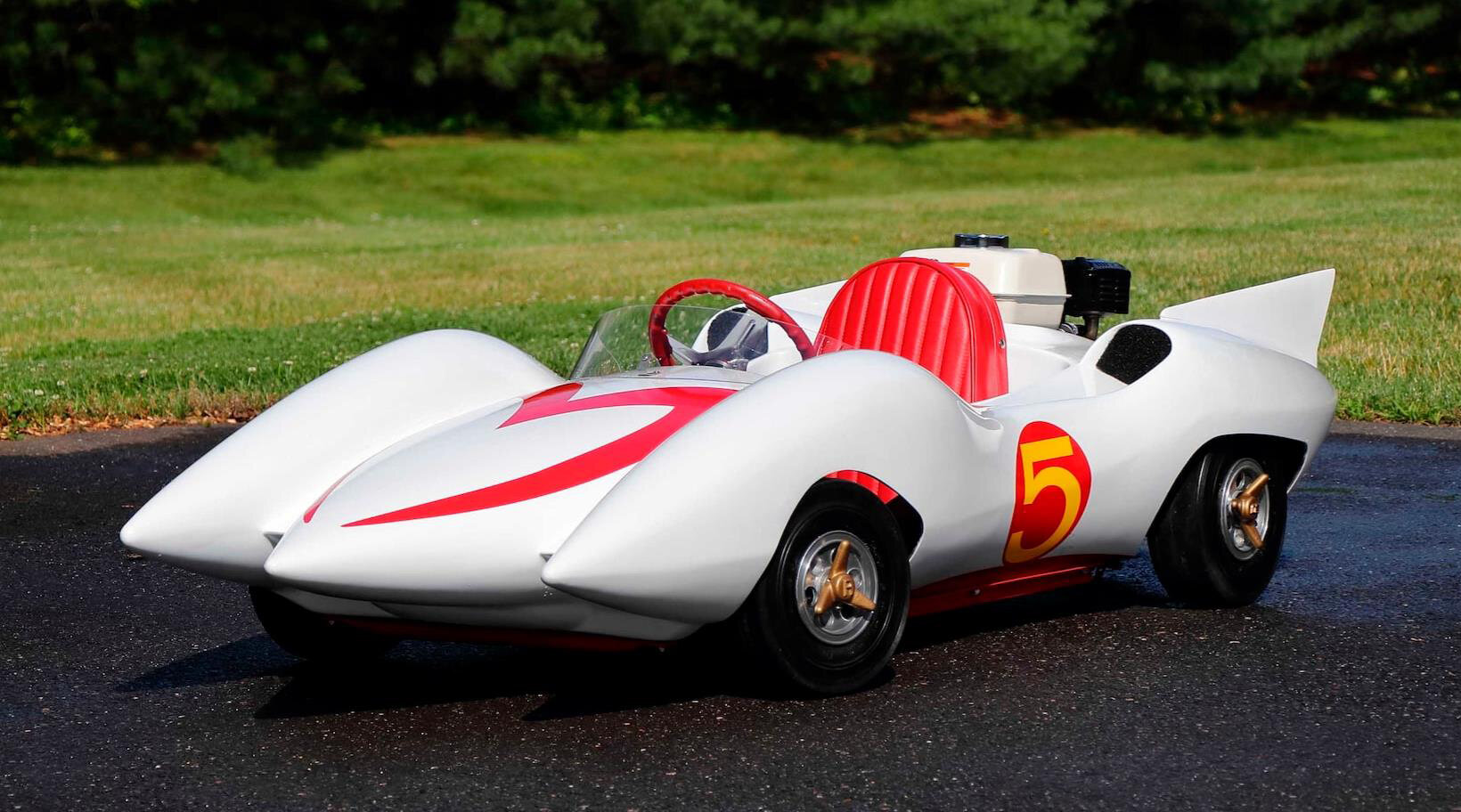
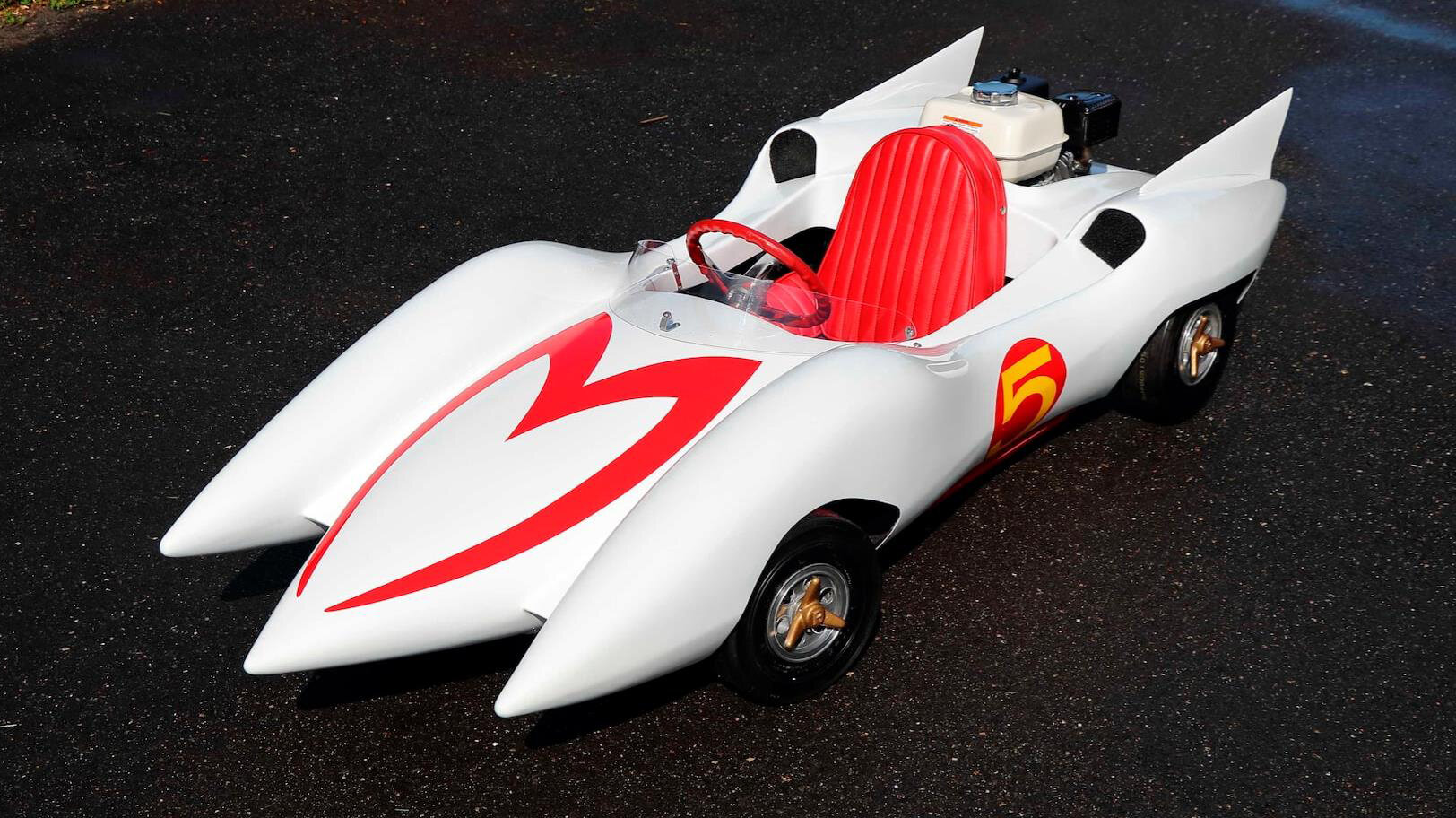
Here it comes, here comes a Speed Racer … go-kart. This meticulously handcrafted creation is an inspired scale replica of the powerful Mach 5 cartoon car that zoomed and zipped across some of the world’s most challenging tracks. It is one of three built from scratch by the seller, whose close attention to detail is evident in this faithful Mach 5 go-kart. Starting with a go-kart chassis, each part was hand-formed during the year-long build. Power comes from an air-cooled, four-stroke, OHV Honda GSX120 engine, which hasn’t been started since this go-kart’s restoration. Drum brakes bring the little racer to a stop.
The body was formed out of 3/8-inch hand-laid fiberglass and painted in a base/clear-coat paint. On the hood is the distinct red “M,” and the doors wear the appropriate No. 5 red and yellow logo. All of the kart’s fasteners are stainless steel, while all of the other metal parts were powder coated. The frameless windshield is made out of Lexan. Inside, this single-seat recreation might not have room for Trixie, Sprittle or Chim Chim, but it does very much closely match the cartoon car with its vibrant red cabin. The seat is covered in red European leather, and faux gauges are installed on the dash. Also included is a vintage helmet and jacket. “Speed Racer” zoomed into the hearts and imaginations of kids everywhere when the cartoon television series launched in the United States in 1967. It was only on for two seasons and followed the adventures of Speed Racer, a teenage race car champion. His futuristic Mach 5 car was the vehicle of dreams for many young enthusiasts, and it featured some truly fantastical features, all of which were controlled by the steering wheel. It had such tech as rotary saws, a retracting, bullet-proof cockpit and a homing robot. This Speed Racer Mach 5 Go-Kart would be a splendid addition for any diehard fan or demon on wheels who wants to jam the pedal down like they’re never coming back.

Ferrari Bimbo Racer Electric Car
In the off-chance that your child’s taste was as extravagant as your own, the 1956 Ferrari Bimbo Racer was built for your offspring to turn as many heads while driving as you do. Bimbo Racers were designed by one of the most successful automobile designers of the 20th century, Giovanni Michelotti, and built by S.I.L.A. in Turin, Italy. Michelotti had designed many Ferraris including the 166 and 212, two significant models that helped Ferrari gain footing in the early 1950’s. Michelotti sculpted the Bimbo Racer to resemble these early Ferraris, and it is easy to see the resemblance.
The sleek hand-built body of the Bimbo Racer is constructed from fiberglass, and sits atop a rigid steel frame. The car features many working accessories such as functional headlights and taillights. The 125-watt electric engine sits in the trunk and is powered by a standard 12-volt automobile battery. This allows the Bimbo Racer to travel 35 miles on a single charge at about 7 MPH.
The well-constructed Bimbo Racer was advertised as a car, “for pre-teen men and women of distinction,” and it truly lived up to that description. While the Bimbo Racer was indeed a toy, the junior car was assembled with quality parts and is ready for the next distinctive young driver to pilot it around the yard.
1952 Offyette Midget Race Car
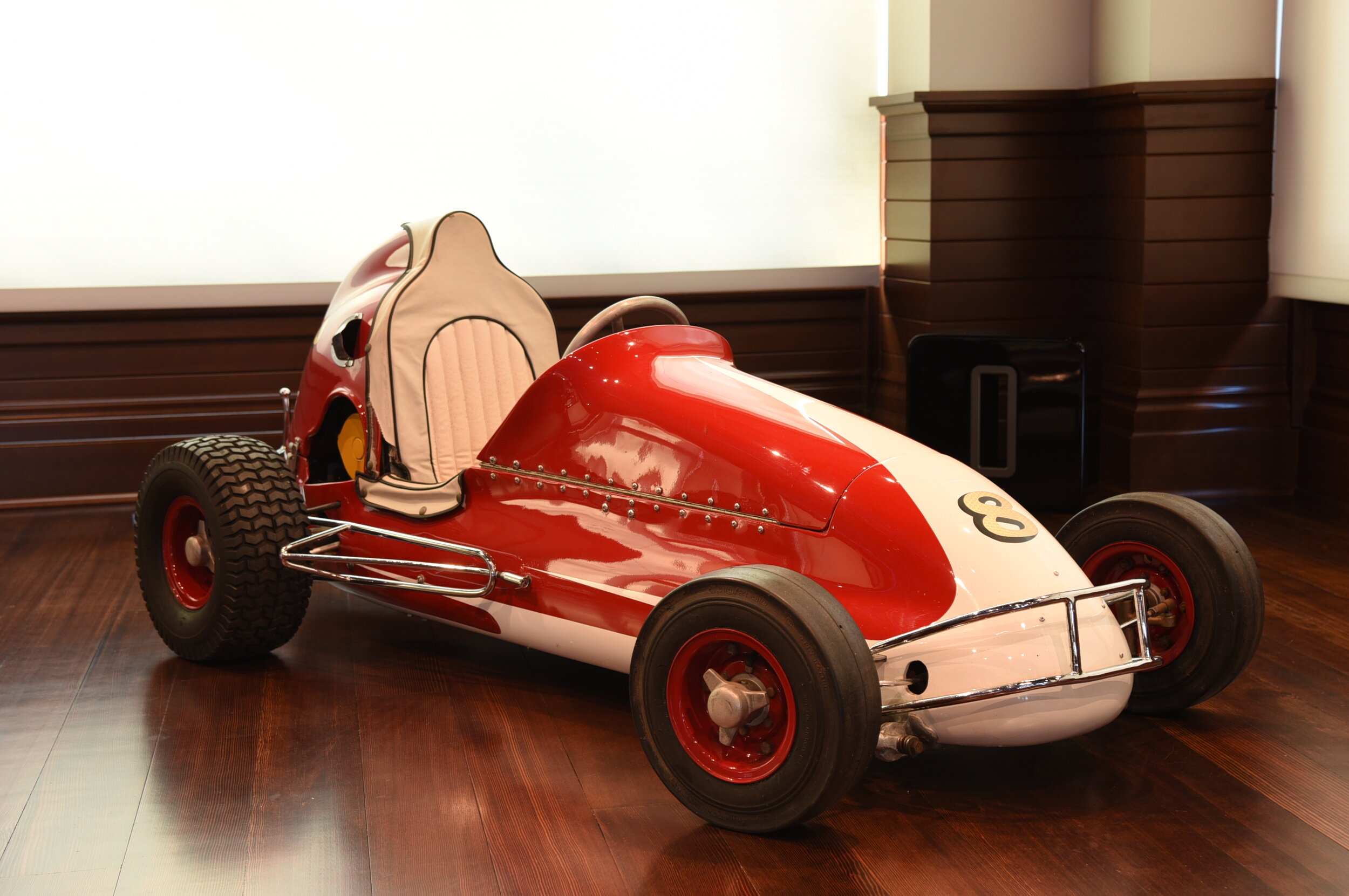
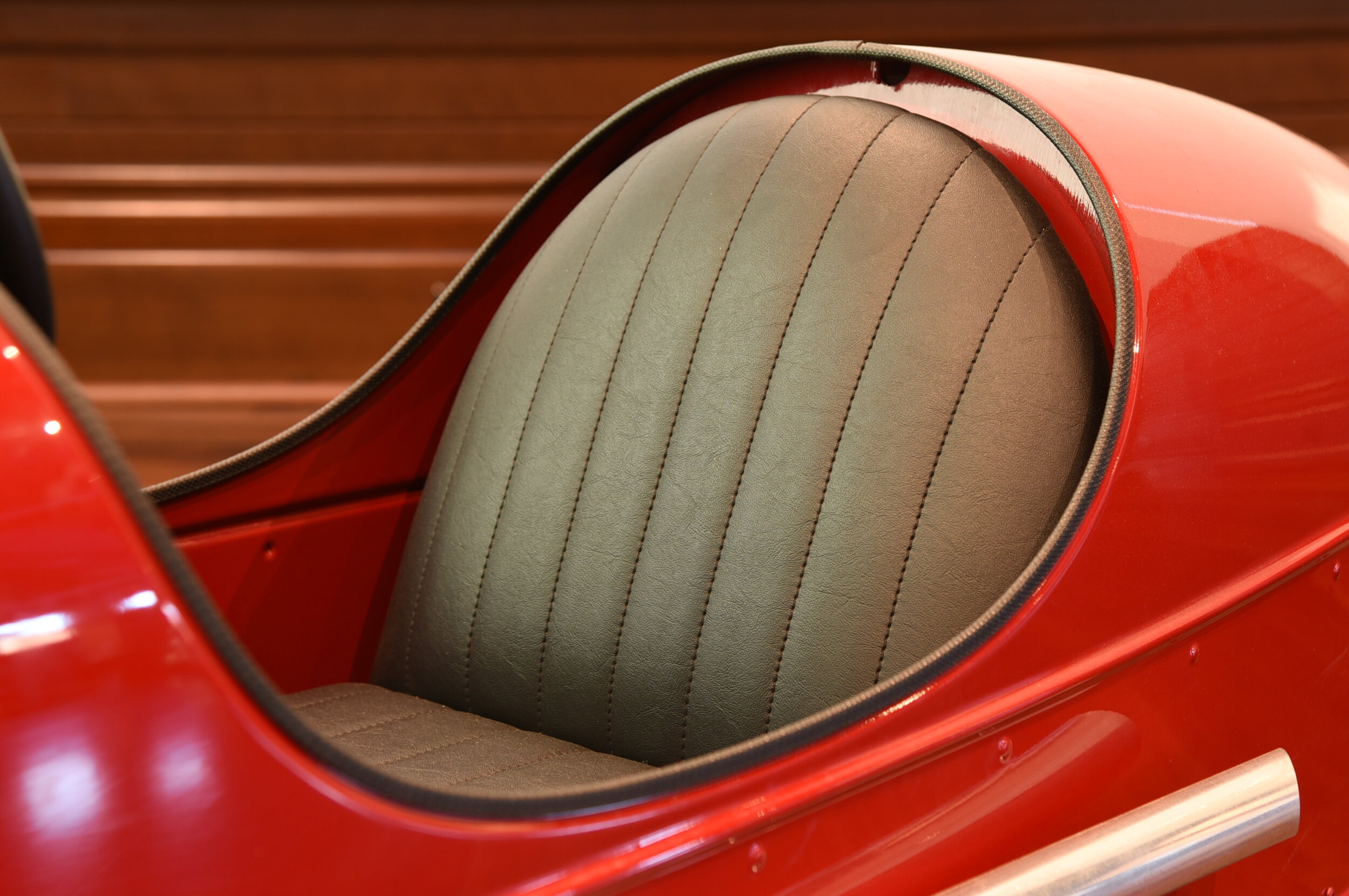
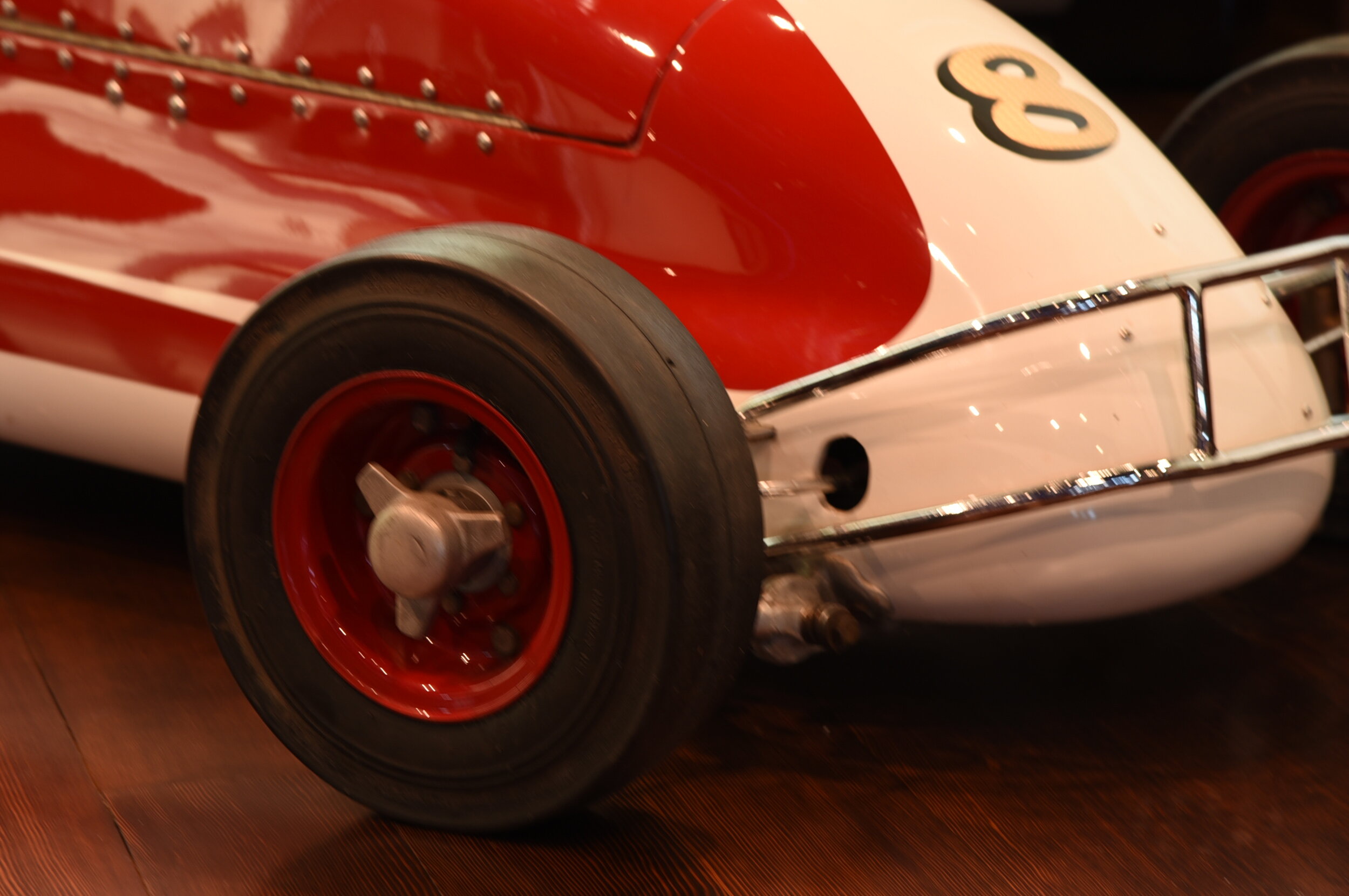
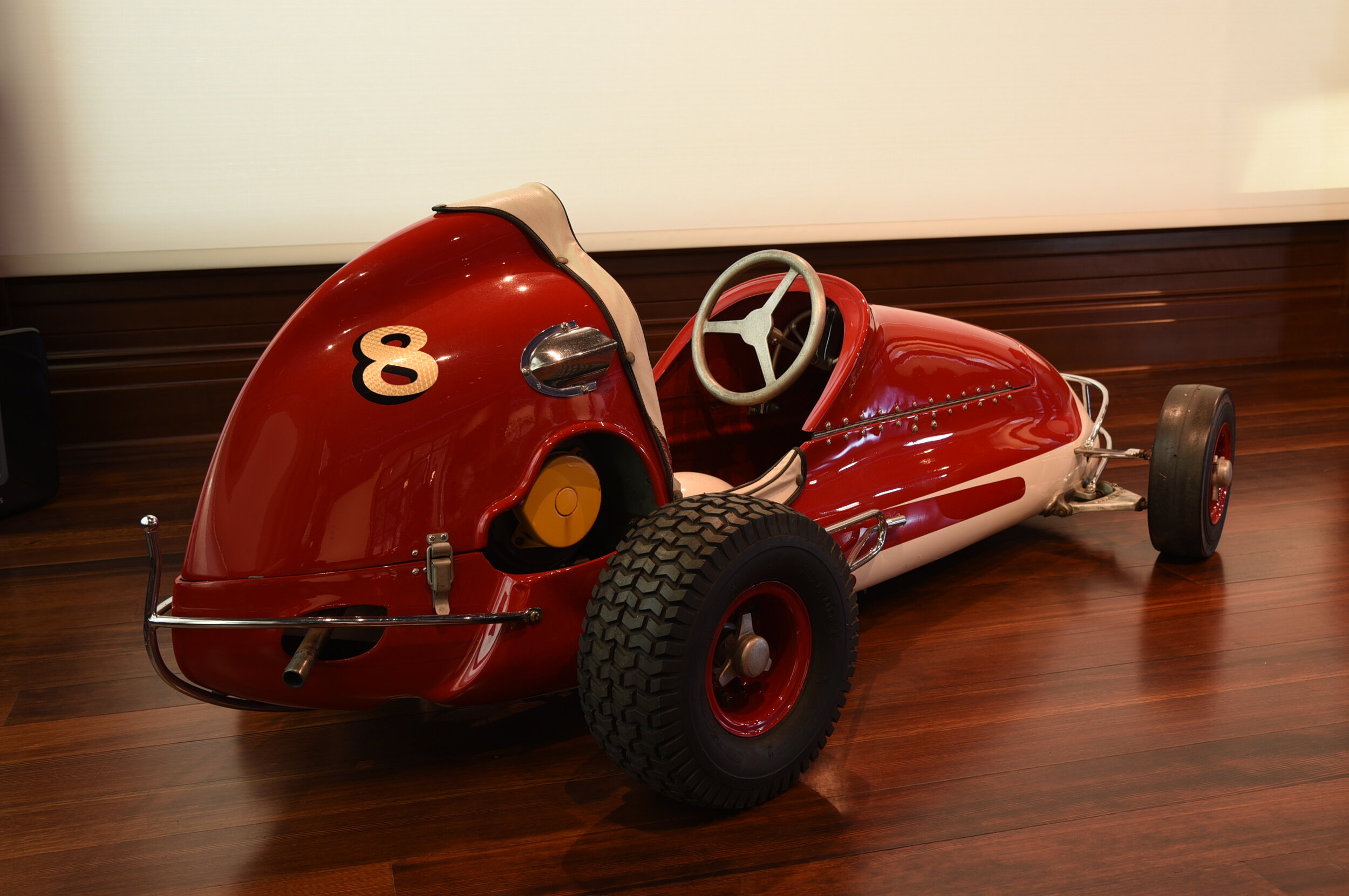
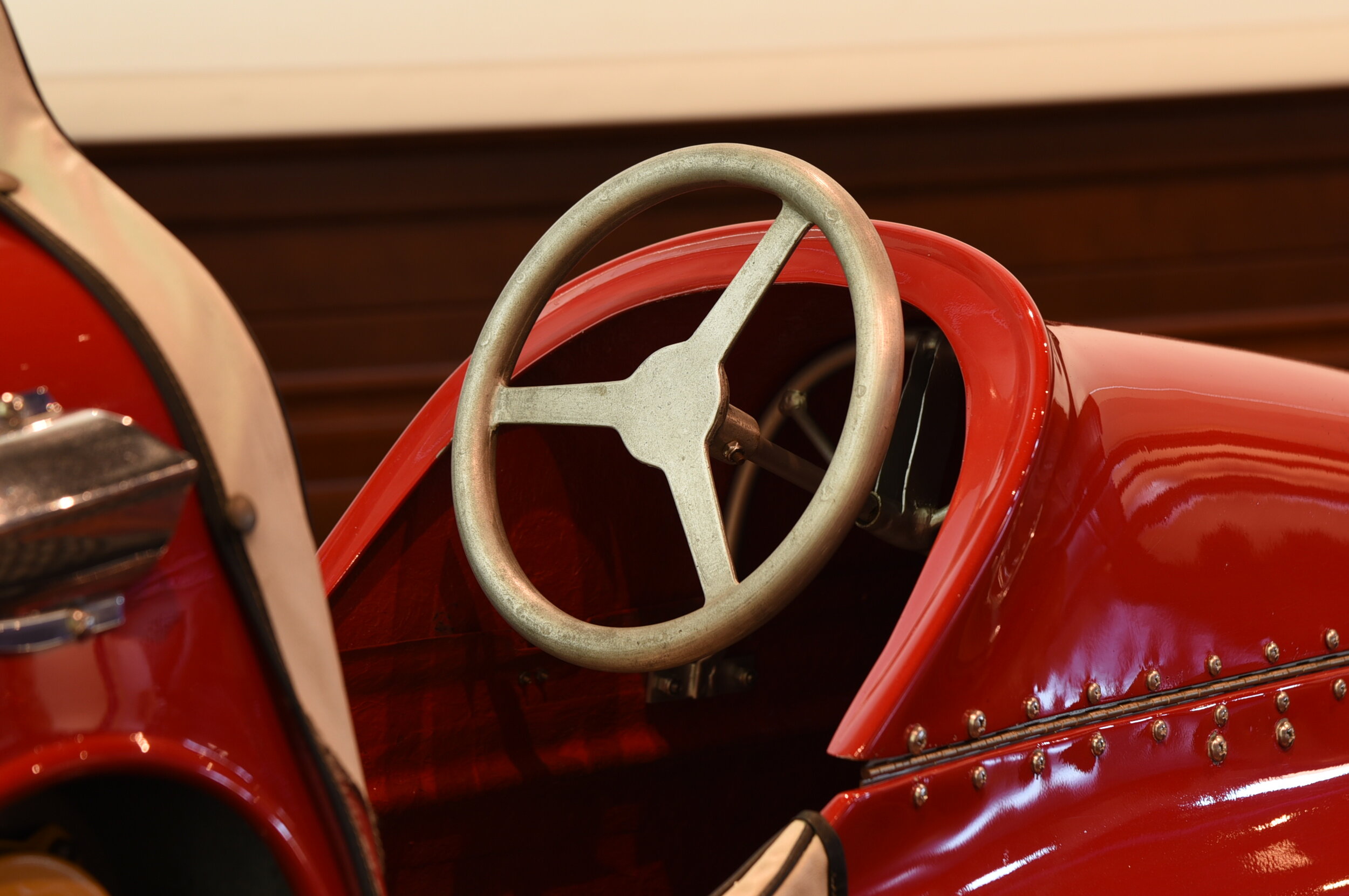
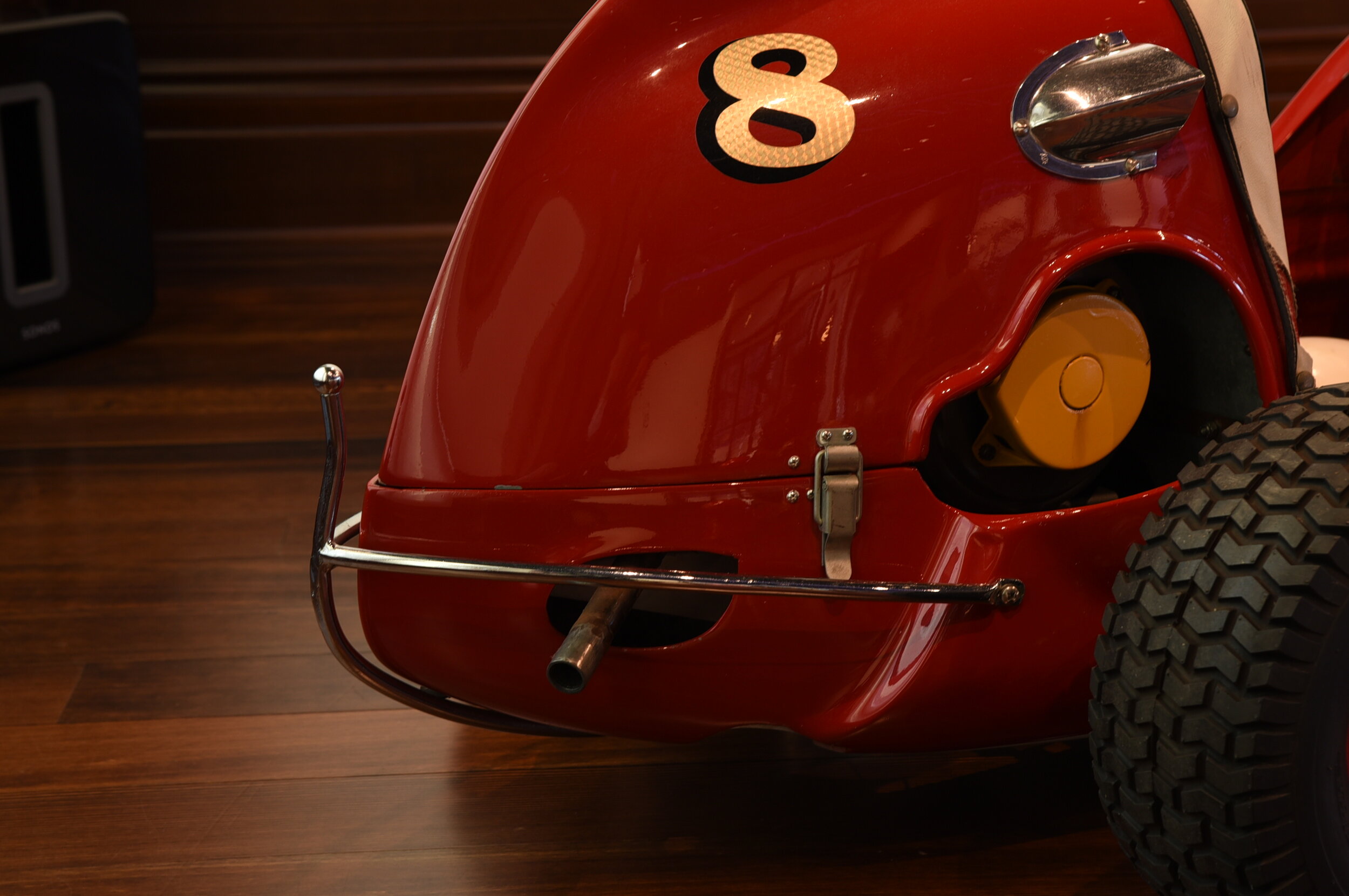
Quarter midget racing gained popularity in the 1940’s, and many of the cars in the early days were built at home. Lawn mower engines, tires from wheelbarrows and bodies made from, among other things, castoff car fenders from the 1940’s were the norm. However, the demand for cars for youngsters to race grew so rapidly that several companies were formed on both the east and west coasts to fill the need for quarter midgets.
The Larc-Douglass Company of Mineola, NY began building quarter midgets in 1955 under the brand name, "Offyette". This new breed of car used fiberglass bodies and the Continental Red Seal 4 stroke engine. Tire and car size was standardized to make for more equal competition.
Long Island has long had folks entrenched in the “car culture”, though the popularity of quarter midget racing boomed on the West Coast. In California, dozens of tracks sprouted up in communities throughout the state. The availability of undeveloped land and a huge Los Angeles based automotive industry gave them an advantage. At its height, the West Coast had upwards of three dozen manufacturers of quarter midget race cars.
From the collection of Wayne Carini
Red Bug Electric Cars
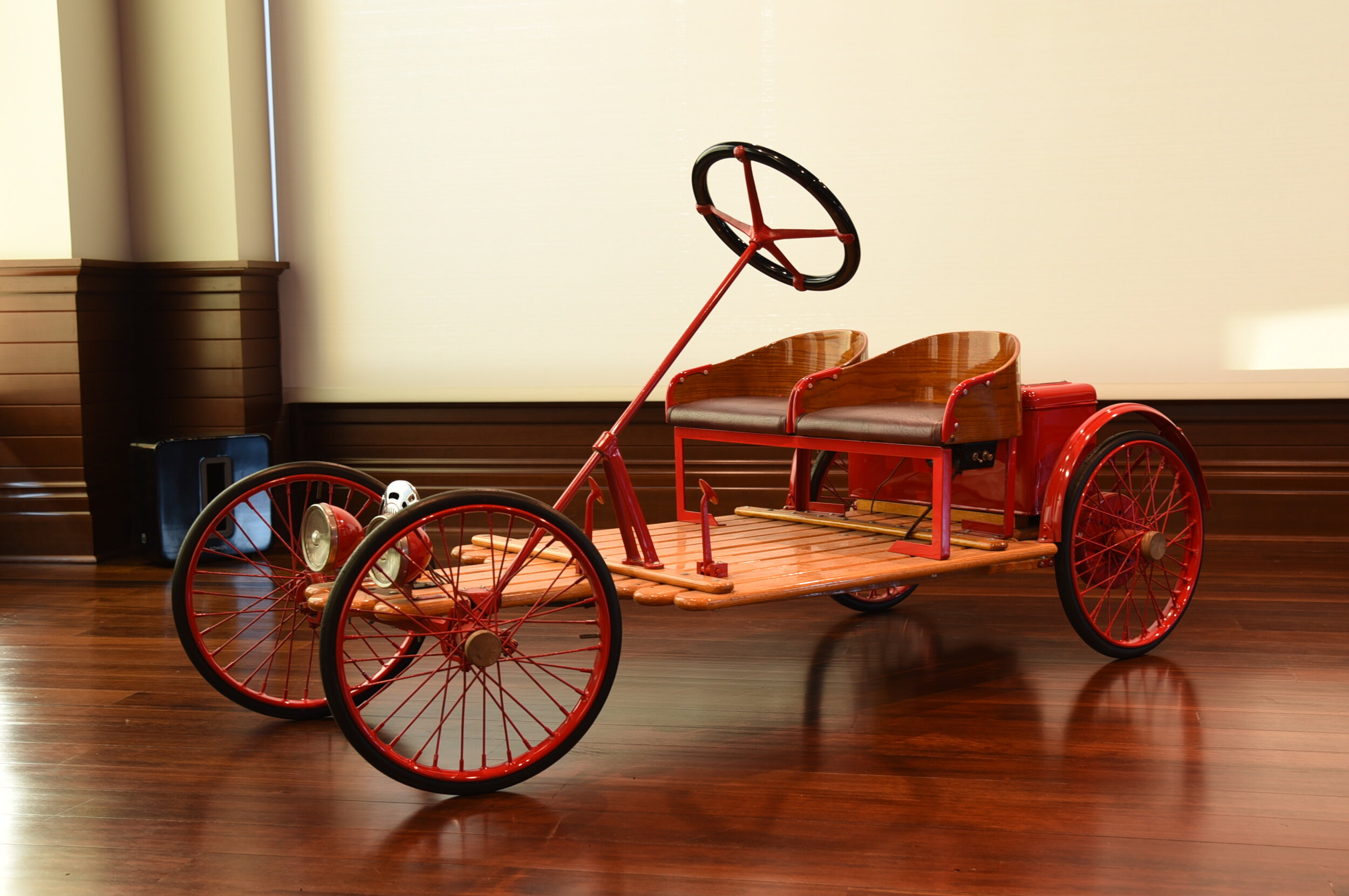
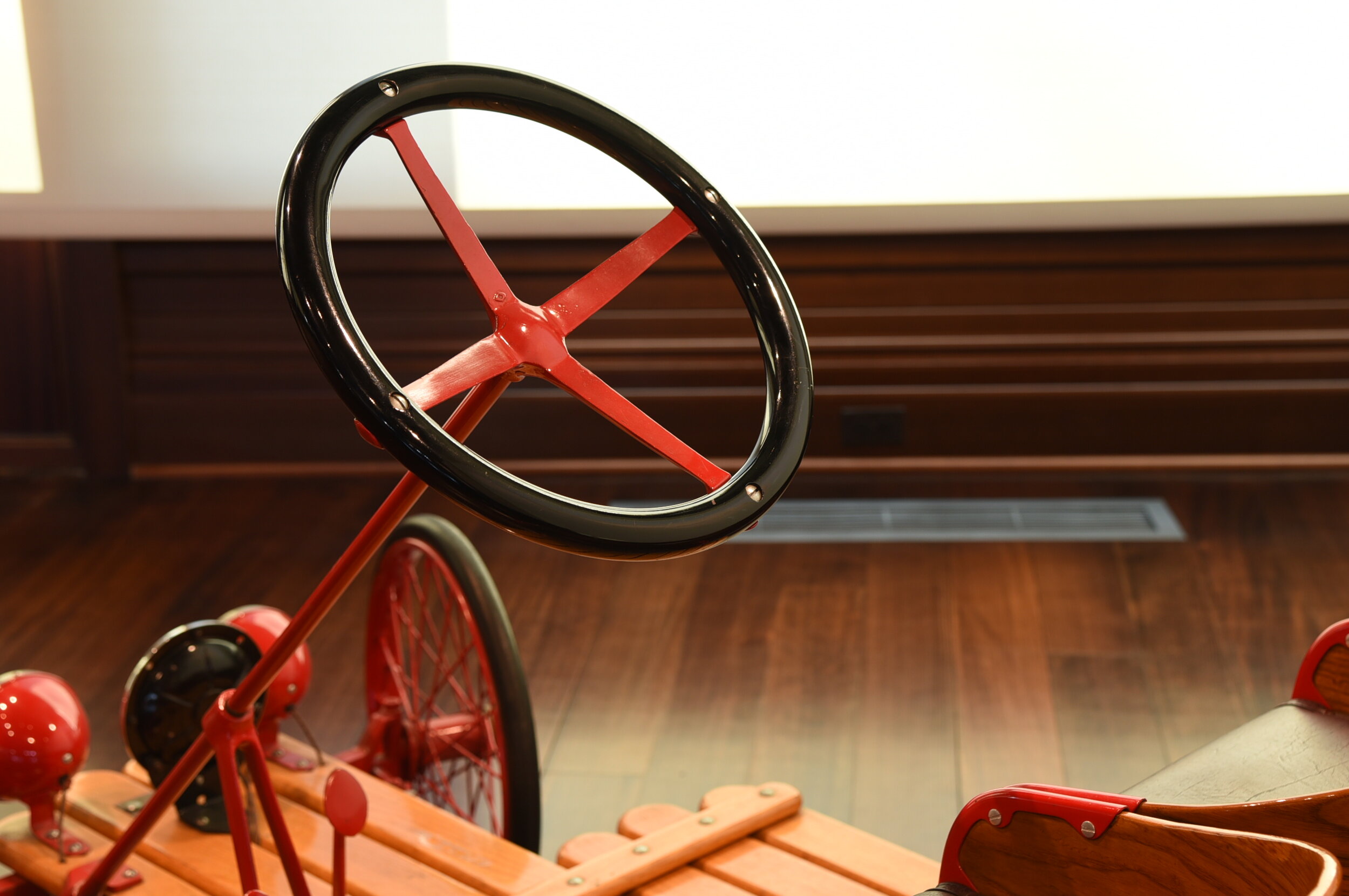
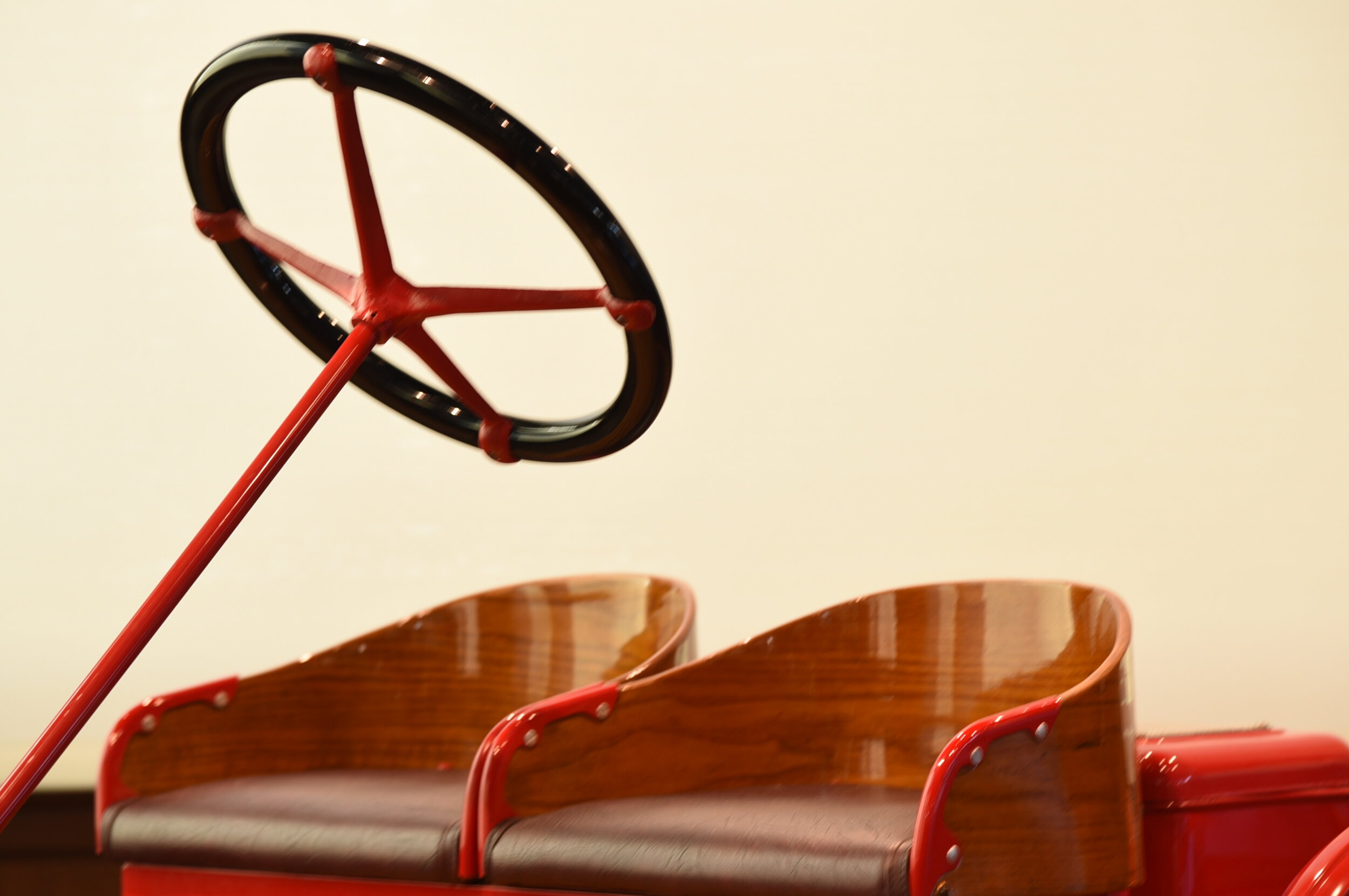

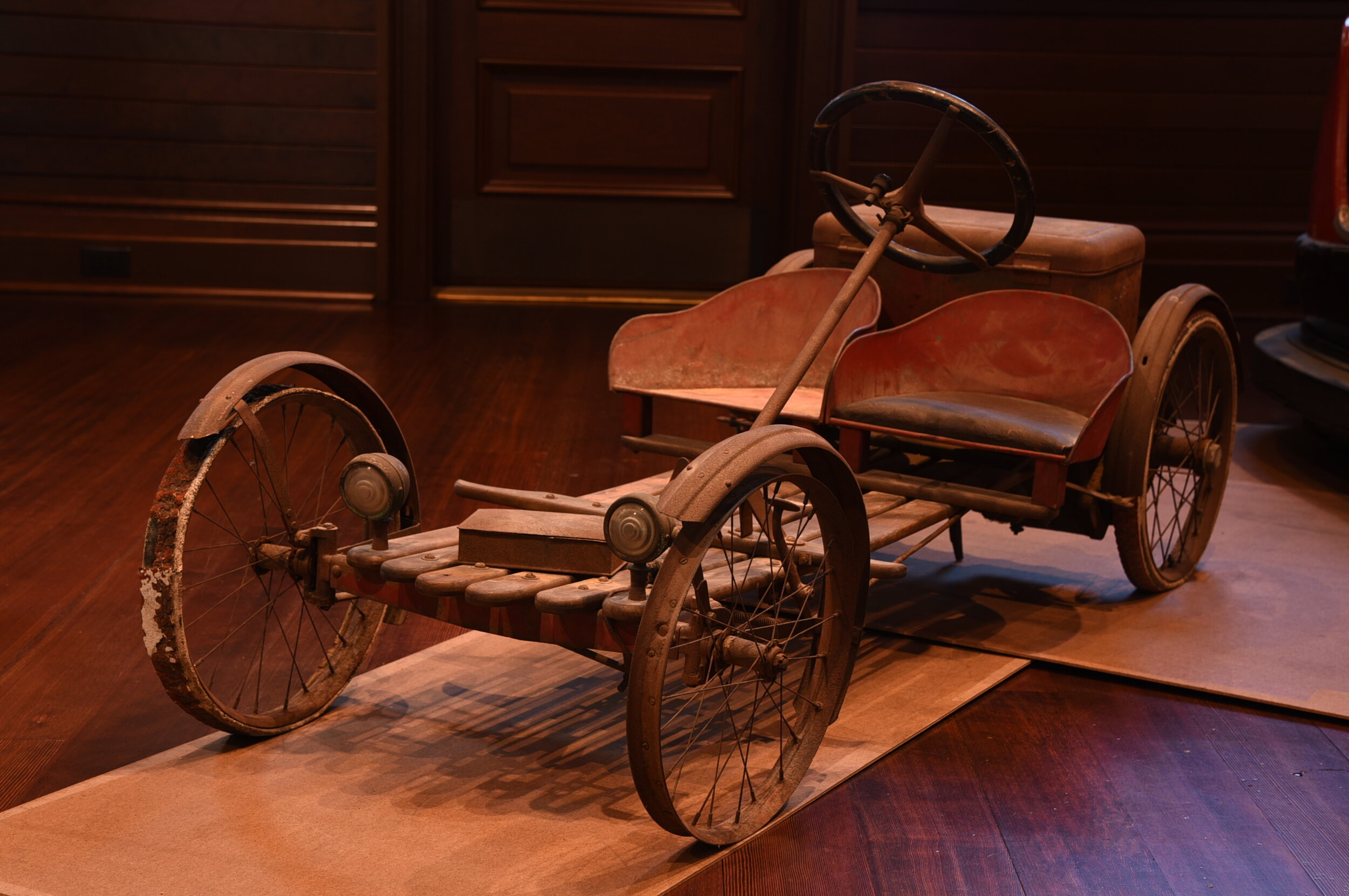
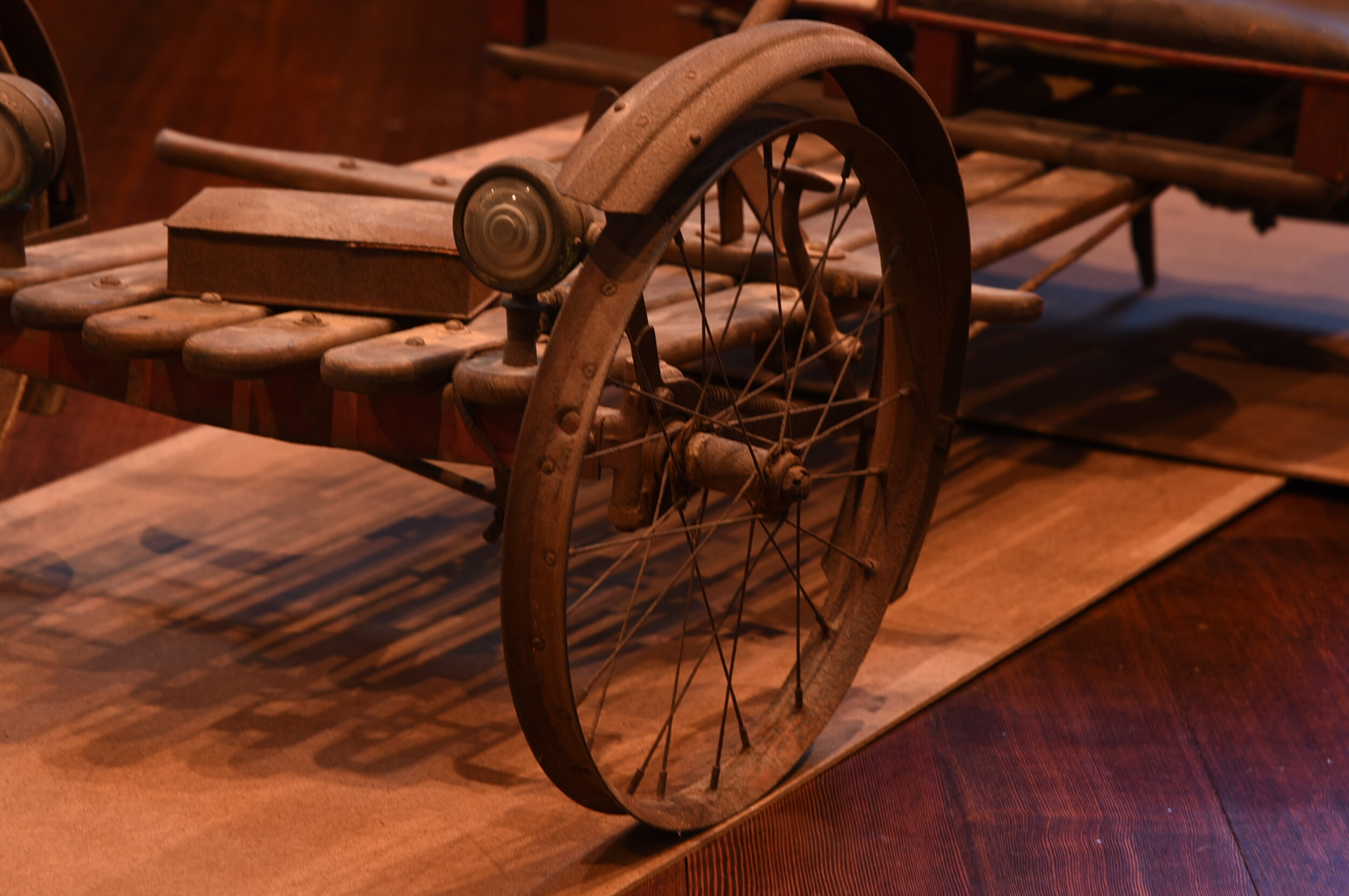
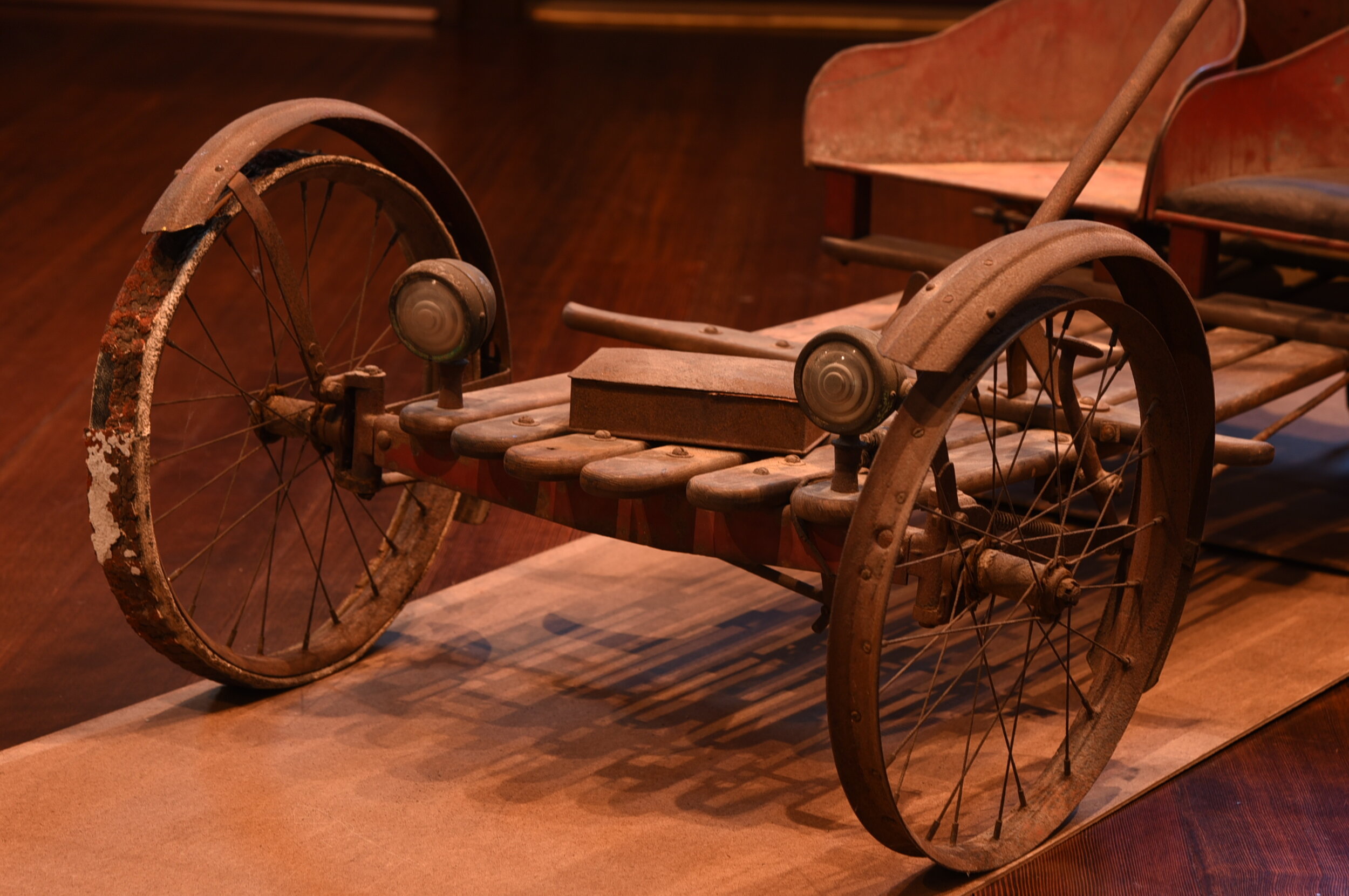
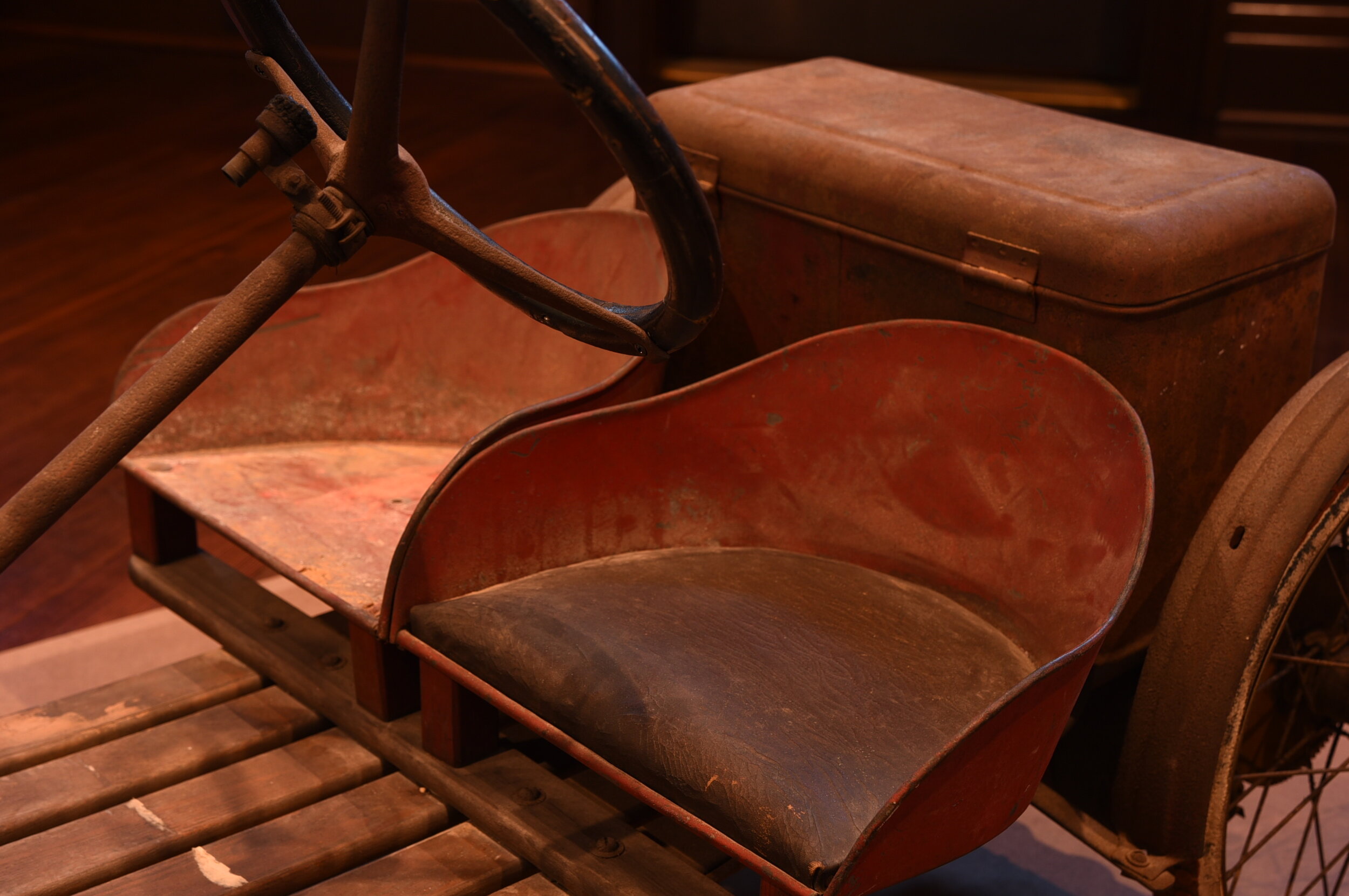
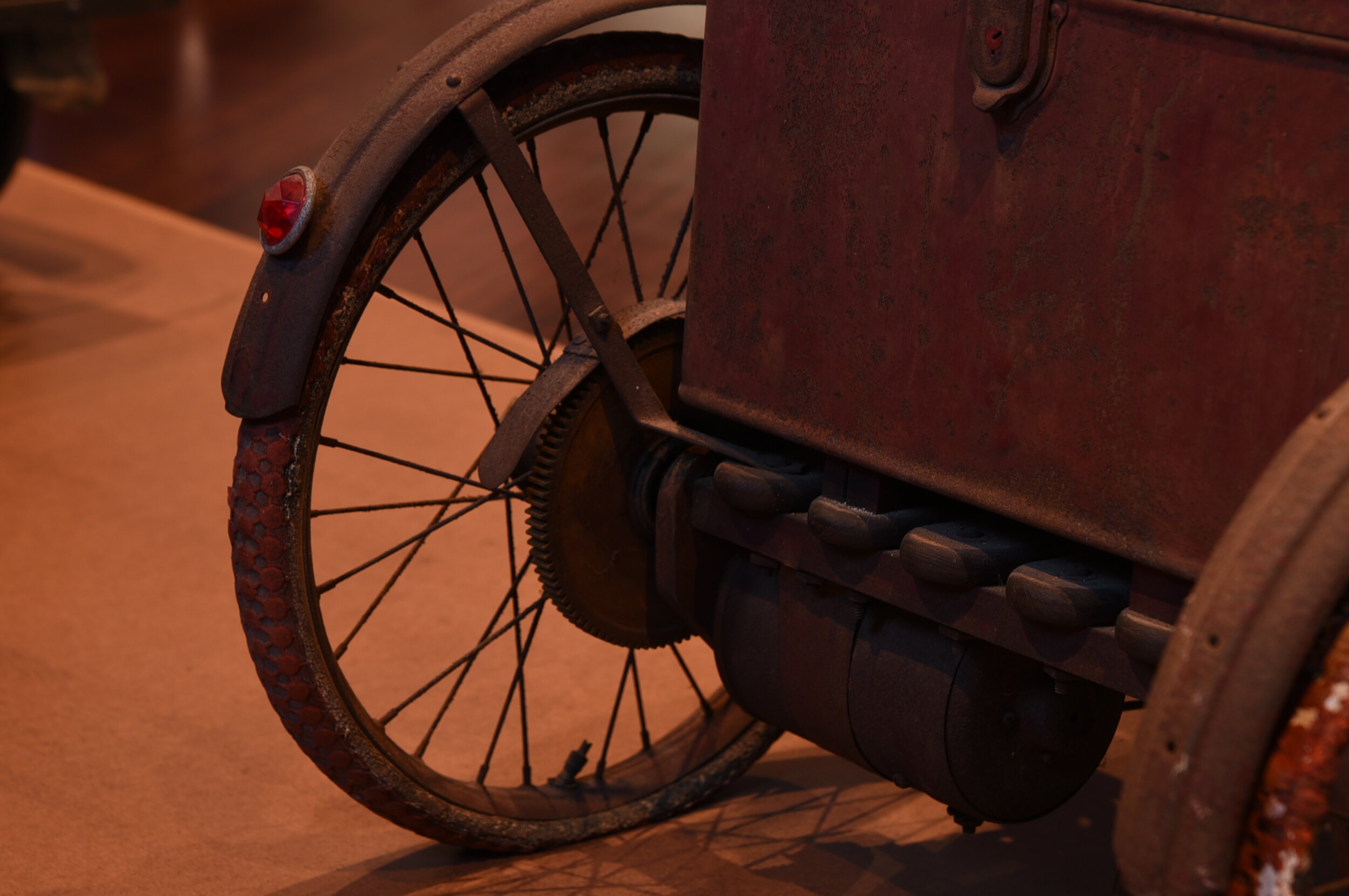
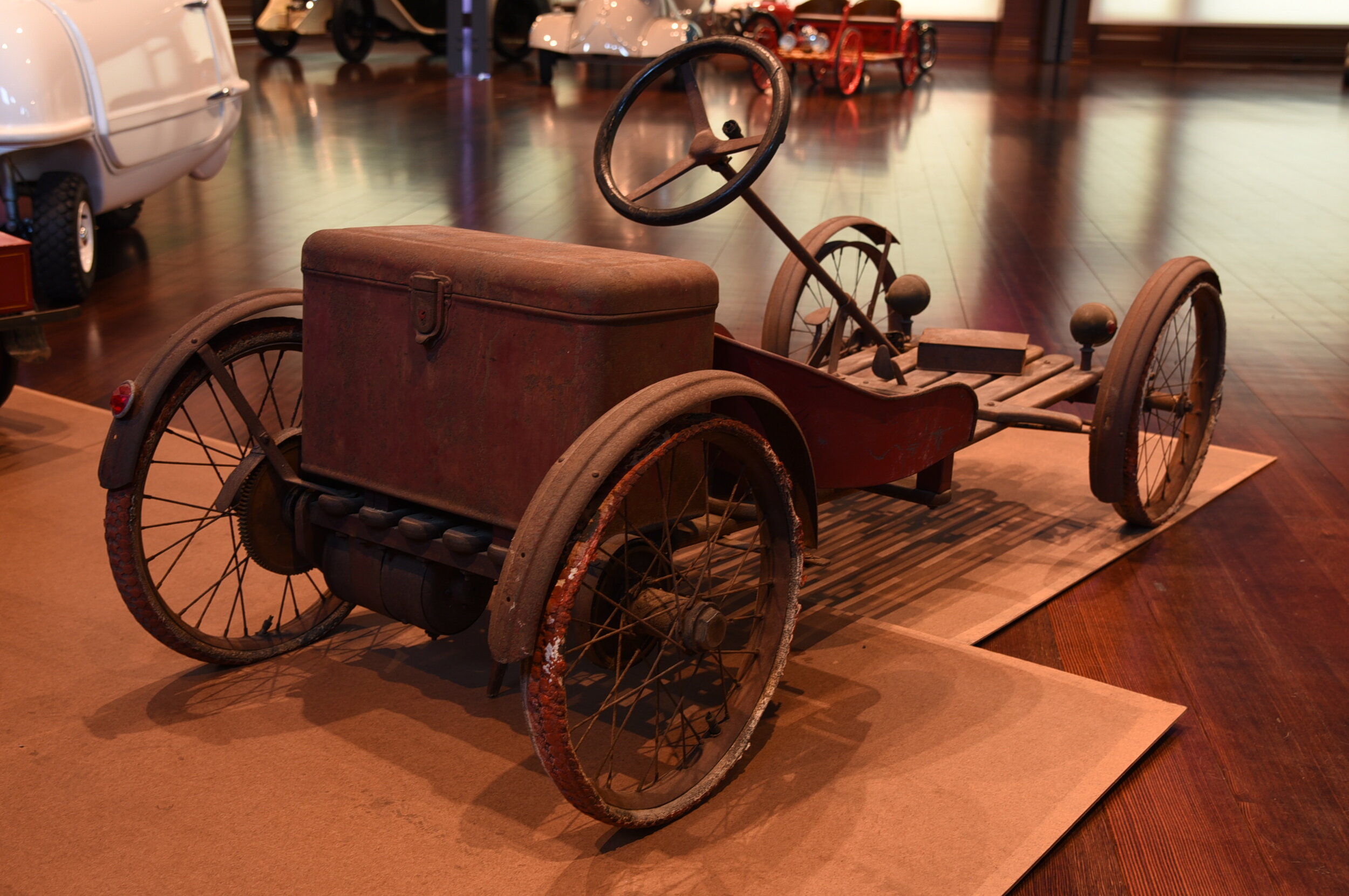
Red Bug electric cars are known as some of the earliest microcars ever made, and while A.O. Smith made full size models for wealthy adults, the company also produced smaller examples for children. The Red Bug obtained speeds of up to 25 miles per hour and was powered by a motorized fifth wheel, positioned at the rear of the vehicle. Red Bugs entered production in 1910 and continued until 1928. They were designed originally as an economical car, the gasoline version was replaced around 1925 with the slower-operating electric model.
Red Bugs were very popular amongst the wealthy as a useful novelty item. Owners often utilized them for short distance transportation around town, and the microcars were also used for guests at resorts and amusement parks. The microcars were even rented out vacation spots such as St. Simons Island. Red Bugs operated on a standard automobile storage battery and were easily recharged at home. The cars came equipped with an emergency brake, parking lock, headlights, and taillights.
The 1918 Red Bug Junior belongs to Lindsey Carini, daughter of television personality Wayne Carini. Lindsey would take her Red Bug to car shows that her dad participated in to drive around and display alongside her fathers. Still in its original condition, this is the earliest surviving example of a Red Bug Junior!
Unrestored Red Bug Junior from the collection of Wayne Carini
Restored adult Red Bug from the collection of Charlie Lemaitre






